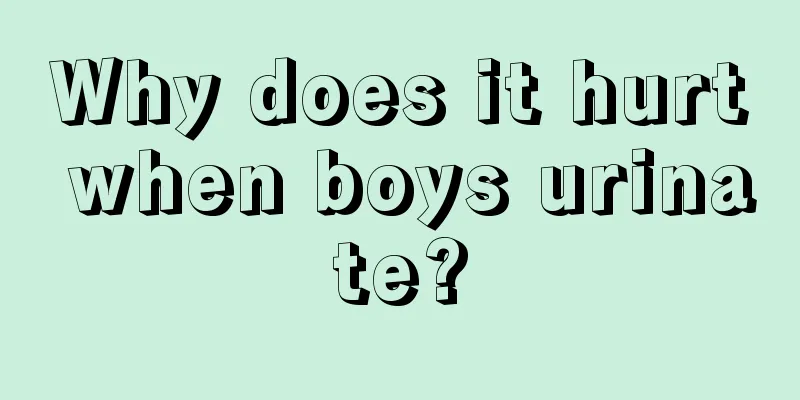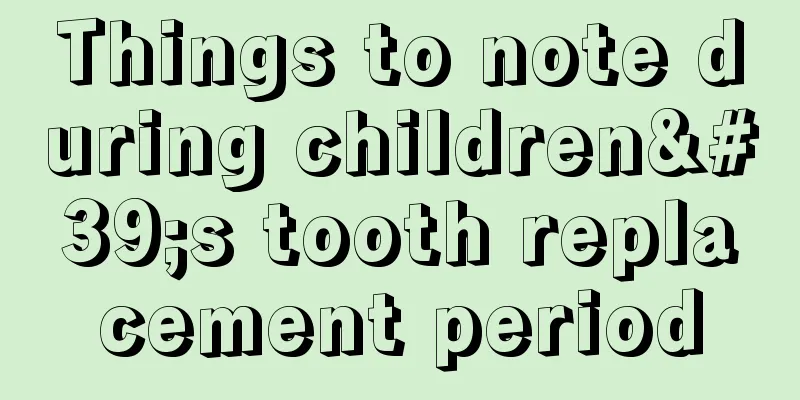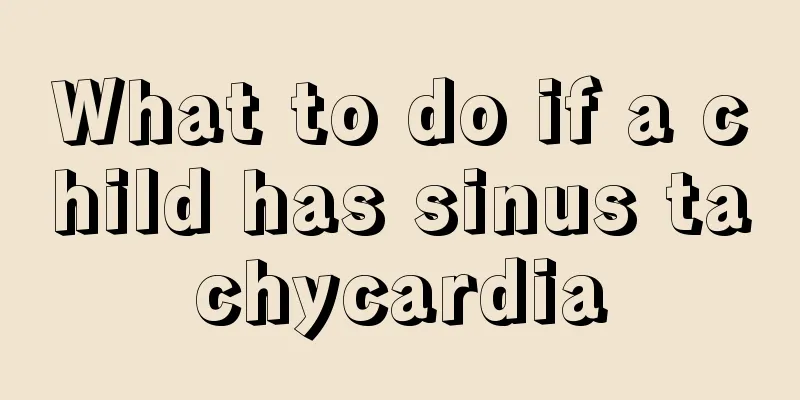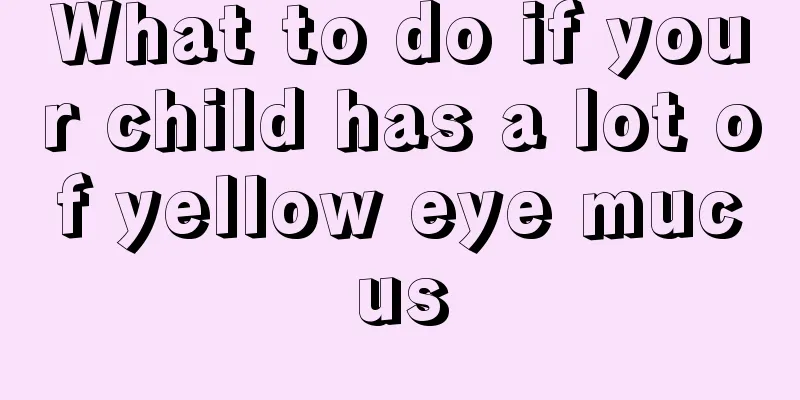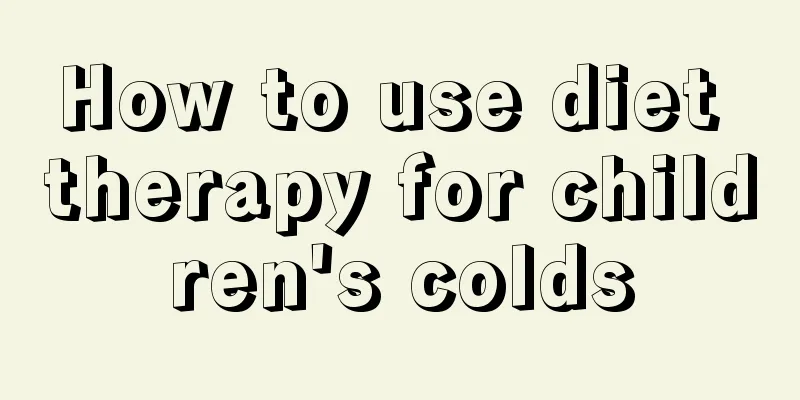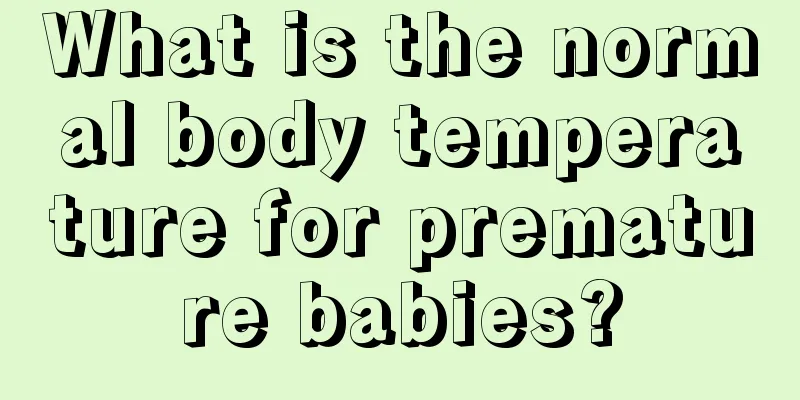What are the treatments for influenza in children?
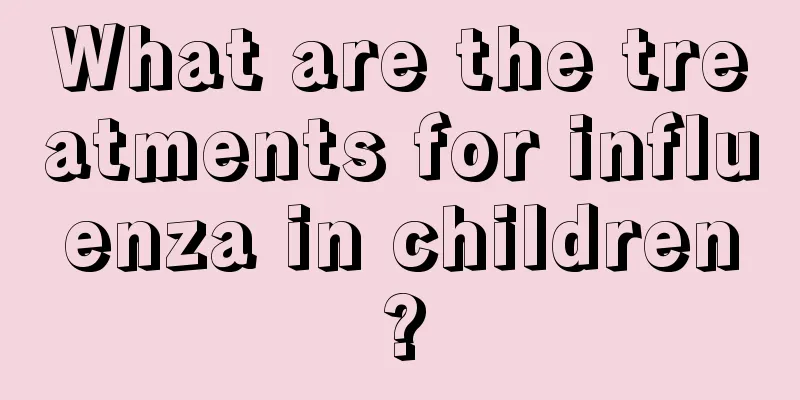
|
There are many types of colds. It takes about a week for adults to recover from a cold, let alone children. Children's common cold also takes about a week. However, what parents fear most is that their children will catch the influenza. Although children are now vaccinated against influenza, they are still susceptible to influenza. If children's influenza is discovered too late, it can easily be transmitted to others. Therefore, it must be treated in time. So, what are the treatments for influenza in children? Let’s take a look at the detailed introduction below. Treatment of influenza in children Children's influenza is different from the common cold. The common cold is relatively simple to treat, while children's influenza can be transmitted to others through certain channels, such as air, public items, animals, etc., causing more people to become sick. So, what are the treatments for children's influenza? Let's take a look at the detailed treatments below. 1. TCM treatment methods for influenza in children: Epidemic colds can be divided into wind-heat, wind-cold, summer-dampness and other types depending on the pathogens. 1. Wind-heat type: Symptoms: Throat inflammation, accompanied by headache, nasal congestion, runny nose, cough, floating and rapid pulse, and slightly yellow tongue coating. You can use Chinese medicines such as honeysuckle, forsythia, mulberry leaves, chrysanthemum, bamboo leaves, and burdock seeds to dispel wind and heat. 2. Wind-cold type: Symptoms: Fear of cold, fever, nasal congestion, clear runny nose, headache and itchy throat are the main symptoms. Chinese medicines that can dispel wind and cold, such as Schizonepeta, Saposhnikovia, Notopterygium, Peucedanum, Citrus aurantium, and Licorice, can be used mainly. 3. Summer heat and dampness type: Common in hot and humid summer. Symptoms: Headache, nausea, loss of appetite, diarrhea, and persistent high fever. You can use aromatic and dehumidifying Chinese medicines such as Elsholtzia ciliata, lentils, Magnolia officinalis, Forsythia suspensa, and Lophatherum gracile. 2. Western medicine treatment methods for influenza in children:
There is no exact and effective specific treatment method, and emphasis should be placed on general care and prevention and treatment of complications. 1. Take isolation measures to prevent infection to others and secondary bacterial infection. 2. Rest in bed until your strength recovers. 3. Symptomatic treatment of high fever, irritability, headache, etc.: physical cooling or taking antipyretics such as acetylsalicylic acid, metamizole, aminopyrine, etc. 4. Proper feeding: The diet should be light and drink plenty of water. How to distinguish influenza from the common cold in children 1. Both the common cold and influenza are viral colds caused by viruses. 2. Influenza is an acute respiratory infectious disease caused by influenza virus. Symptoms of common influenza are: sudden chills, fever, headache, body aches, nasal congestion, runny nose, dry cough, chest pain, nausea, and loss of appetite. Infants, children, and the elderly may develop pneumonia or heart failure. Patients with toxic influenza will suffer from high fever, delirium, coma, convulsions, which can sometimes be fatal. Since the disease is easily spread, it should be isolated and treated early; 3. Common cold, commonly known as cold, medically known as acute rhinitis or upper respiratory tract infection, its main feature is that the pathogens are complex and diverse, a variety of viruses, mycoplasmas and a few bacteria can cause colds, each onset can be caused by different pathogens, a person can catch a cold many times in a year, generally there are no obvious systemic symptoms, but mainly have sneezing, runny nose and other catarrhal symptoms; 4. The common cold is much less contagious than influenza. People are more likely to get sick when they are exposed to cold, rain, or excessive fatigue because their resistance is reduced. Therefore, the common cold usually occurs individually, and rarely occurs in large numbers like during an influenza epidemic. 5. When the common cold occurs, most cases present with a low fever, rarely a high fever. The patient suffers from nasal congestion, runny nose, sore throat, headache, body aches, fatigue and weakness. The symptoms are milder than those of influenza and are not life-threatening. Complications of influenza in children
1. Bacterial pneumonia The incidence rate is 5-15%. The condition worsens further 2-4 days after the onset of influenza, or worsens after the influenza recovery period, with symptoms such as high fever, severe cough, purulent sputum, dyspnea, moist rales in the lungs, and signs of pulmonary consolidation. The total number of leukocytes and neutrophils in the peripheral blood increased significantly, mainly caused by Streptococcus pneumoniae, Staphylococcus aureus, especially methicillin-resistant Staphylococcus aureus, Streptococcus pneumoniae or Haemophilus influenzae. 2. Fungal infection Infections that cause pneumonia include Chlamydia, Mycoplasma, Legionella pneumophila, fungi (Aspergillus), etc. When conventional anti-infection treatment is ineffective for pneumonia in influenza patients, the possibility of fungal infection should be considered. Common ones include rhinovirus, coronavirus, respiratory syncytial virus, parainfluenza virus, etc. They have a high incidence in patients with chronic obstructive pulmonary disease (COPD) and can aggravate the condition. It is clinically difficult to distinguish them from pneumonia caused by influenza virus. Relevant etiological and serological tests are helpful for differential diagnosis. 3. Reye syndrome It is occasionally seen in children under 14 years old, especially those who use salicylic acid antipyretic and analgesic drugs such as aspirin. The main manifestations are nausea, vomiting, followed by drowsiness, coma, convulsions and other neurological symptoms after the fever subsides, hepatomegaly, no jaundice, and normal cerebrospinal fluid examination. The pathogenesis is unclear. 4. Myositis and rhabdomyolysis syndrome Rarely seen in influenza. The main symptoms include muscle weakness, renal failure, and elevated CK. 5. Heart damage Cardiac damage is uncommon and mainly includes myocarditis and pericarditis. Elevated creatine kinase (CK) and abnormal electrocardiogram may be seen, while abnormal troponin is rare and usually recoverable. Heart failure may occur in severe cases. 6. Nervous system damage Including encephalomyelitis, transverse myelitis, aseptic meningitis, focal neurologic dysfunction, and acute infectious demyelinating polyradiculoneuropathy. The above has detailed the type of cold called influenza in children. The treatment of influenza in children is different from that of the common cold. When children suffer from influenza, parents should not take their children to crowded places to play. It is best to let the children receive treatment while resting at home to avoid affecting recovery. |
<<: Do parents pay attention to the causes of children's stuttering?
>>: Prevention of chapped skin in children, baby skin problems should not be underestimated
Recommend
Why do children like to blink?
It's a good thing for some children to be liv...
What to do if your newborn baby has less hair
What should I do if my newborn baby has less hair...
What are the reasons for itchy ears in children?
The ears are a part of the body that people pay m...
Children develop rash after fever
The problem of children's fever should never ...
What are the dangers of anemia in three-month-old babies?
Speaking of the word anemia, I believe everyone i...
What should I do if my child doesn't like to eat or is picky about food?
Families often encounter this problem: their chil...
What is the height and weight of a 40-month-old baby?
Children are the hope of their parents and the fu...
ADHD child education
In the eyes of many parents, children with ADHD a...
Children's feet are itchy and have blisters
Parents should pay attention to children's hy...
There are 8 quick remedies for toothache in children
As the old saying goes, toothache is not a diseas...
Dietary taboos for children with asthma
Asthma is a relatively common disease. It is a ch...
What causes children to vomit and feel nauseous?
Diseases are very common in people's lives, b...
What are the dietary treatments for dry cough in children?
Babies are more likely to catch colds in autumn a...
What to do if your 1-year-old baby has diarrhea
Every change in the baby after birth is watched b...
Can the baby take a bath after the injection?
It is better not to give the baby a bath immediat...
